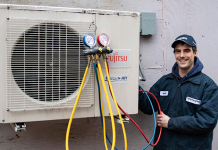The Internet of Things (IoT) is revolutionizing the way we interact with technology, reshaping our homes, cities, and daily lives. By connecting everyday devices to the internet, IoT enables seamless communication and data exchange, leading to increased efficiency and convenience. In this article, we will explore the journey from smart homes to smart cities, examining how IoT is transforming our environment and the challenges it presents.
Post Contents
Understanding the Internet of Things (IoT)
What is IoT?
The Internet of Things refers to the network of interconnected devices that communicate with each other over the internet. These devices can range from household appliances and wearables to industrial machinery and urban infrastructure. The primary goal of IoT is to create a smarter, more responsive environment by collecting and analyzing data in real-time.
Key Components of IoT
- Devices and Sensors: These are the physical components that collect data. Examples include smart thermostats, security cameras, and environmental sensors.
- Connectivity: IoT devices communicate via various networks, including Wi-Fi, Bluetooth, and cellular networks.
- Data Processing: Data collected from devices is processed and analyzed to derive insights, often using cloud computing.
- User Interface: This allows users to interact with IoT systems, typically through mobile apps or web interfaces.
The Rise of Smart Homes
Enhancing Daily Life
Smart homes utilize IoT technology to improve the convenience and efficiency of everyday tasks. Common features include:
- Smart Thermostats: Devices like the Nest Learning Thermostat optimize heating and cooling based on user preferences and habits, resulting in energy savings.
- Smart Lighting: Automated lighting systems allow users to control lights remotely, set schedules, and even adjust brightness based on natural light levels.
- Home Security: Smart security systems include cameras and sensors that send alerts to homeowners when unusual activity is detected.
Benefits of Smart Homes
The integration of IoT in homes offers several benefits:
- Energy Efficiency: Smart devices can optimize energy use, leading to lower utility bills and reduced environmental impact.
- Convenience: Automation allows for seamless control over home systems, making daily routines more manageable.
- Safety: Enhanced security features provide peace of mind, allowing homeowners to monitor their properties remotely.
The Evolution to Smart Cities
What is a Smart City?
A smart city leverages IoT technology to enhance urban living, improve infrastructure, and streamline services. This involves integrating various technologies and data sources to create a connected urban environment.
Key Features of Smart Cities
- Intelligent Transportation Systems: Smart traffic management systems optimize traffic flow and reduce congestion through real-time data analysis.
- Waste Management: IoT-enabled waste bins can signal when they need to be emptied, allowing for more efficient waste collection.
- Smart Grids: These electricity networks monitor and manage energy consumption, enabling more reliable power distribution and reducing outages.
Benefits of Smart Cities
The implementation of IoT in urban environments offers several advantages:
- Improved Quality of Life: Enhanced services and infrastructure lead to a better living experience for residents.
- Sustainability: Smart cities promote resource efficiency, reducing waste and lowering carbon emissions.
- Economic Growth: Improved services and infrastructure can attract businesses and stimulate local economies.
Challenges and Considerations
Data Privacy and Security
As more devices become interconnected, concerns about data privacy and security grow. Protecting sensitive information from cyber threats is paramount for both individuals and municipalities.
Interoperability
For IoT systems to function effectively, devices from different manufacturers must be able to communicate with one another. Standardization and interoperability are essential to ensure seamless integration.
Infrastructure Investment
The transition from traditional systems to smart technologies requires significant investment in infrastructure. Cities must allocate resources wisely to ensure successful implementation and maintenance.
FAQs
- What is the Internet of Things (IoT)?
The Internet of Things (IoT) refers to the network of interconnected devices that communicate with each other over the internet, enabling data exchange and improved functionality.
- How do smart homes benefit homeowners?
Smart homes provide increased energy efficiency, convenience through automation, and enhanced security features, leading to a better overall living experience.
- What defines a smart city?
A smart city leverages IoT technology to enhance urban living, improve infrastructure, and streamline services through interconnected devices and data analysis.
- What are some examples of smart city initiatives?
Examples include intelligent traffic management systems, IoT-enabled waste management, and smart grids that monitor and manage energy consumption.
- What challenges do smart homes and cities face?
Challenges include data privacy and security concerns, the need for interoperability among devices, and the requirement for significant infrastructure investment.
Conclusion
The Internet of Things is fundamentally changing our world, moving from the comfort of smart homes to the expansive landscape of smart cities. As we embrace this revolution, the potential for enhanced convenience, efficiency, and quality of life becomes increasingly clear. However, it’s essential to navigate the challenges associated with data privacy, interoperability, and investment to fully realize the benefits of IoT. The future promises exciting advancements, making our environments smarter and more connected than ever before.










